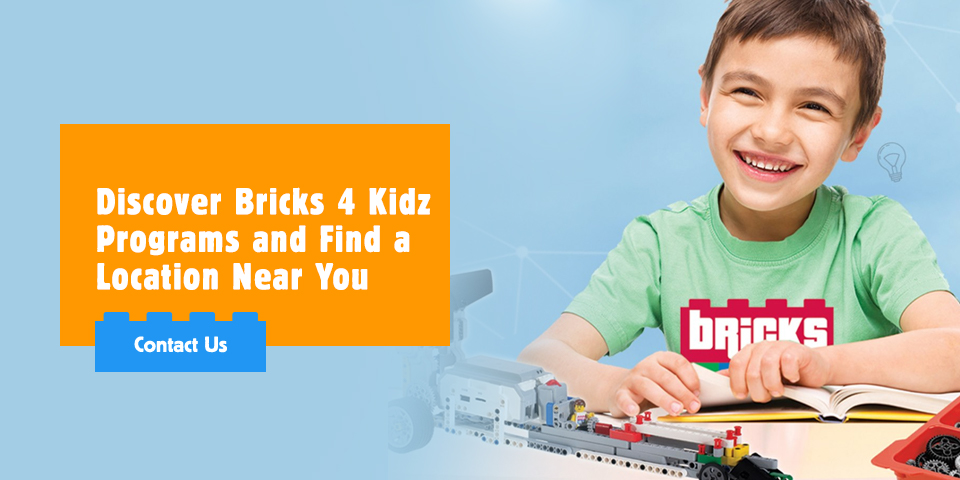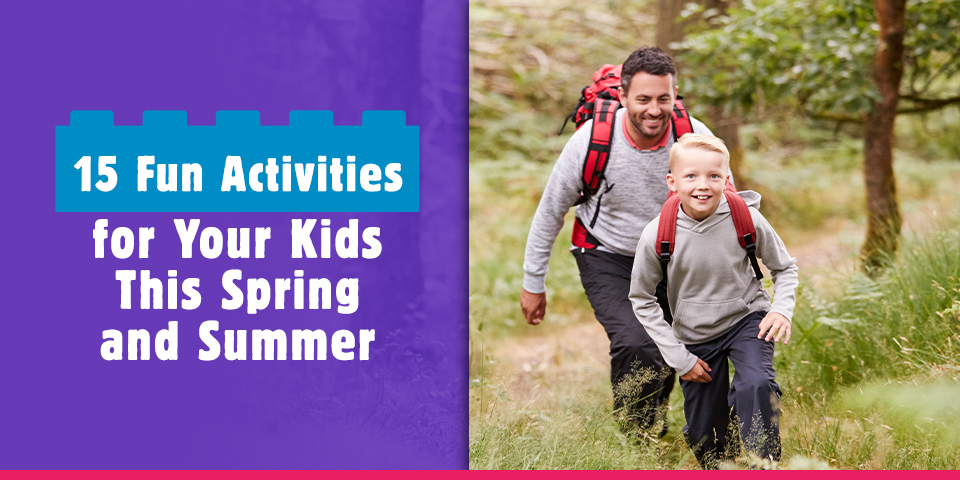
Children are charging with excitement over all the upcoming springtime activities and upcoming summer vacation. Put your child’s adventure skills to the test and go on a family hike or backyard camping experience, or keep things simple by doing at-home education spring and summer activities. Plus, these activities benefit your child’s development, with advantages like improved fine and gross motor skills, concentration and STEM enrichment.
Here, you’ll discover the best spring and summer ideas for kids to have on their bucket list this season. Bookmark this page for future reference, and let the fun begin.
Spring and Summer Outdoor Activities for Kids
The outside is getting warmer, and everything is coming to life. Take advantage of the warmer weather by getting outside and engaging in hands-on fun, like these seven family spring and summer activities.
1. Play Garden
Build your child a space in your backyard or porch for them to create a garden. If you have a backyard, dedicate a small area to till your soil and adorn the space with children-friendly gardening materials. Or, if you have limited space, consider filling a children’s pool with soil and placing it on your porch.
Some things you may want to add to your child’s garden include:
- Nontoxic herbs, like lavender or mint
- Flowers with vibrant blooms
- Plastic gardening tools
- Smooth rocks
- Watering cans
- Planters
2. Nature Scavenger Hunt
Strengthen your child’s observational skills by going on an outdoor scavenger hunt. A scavenger hunt is one of the best spring and summer activities for families because you can work as a team to discover things from a list of must-find items. Your scavenger hunt activity list may look something like this:
- A purple flower
- A bluebird
- A fallen branch
- An anthill
- A cloud shaped like a flower
- A dandelion
- A rabbit
You can keep your scavenger hunt in your backyard or take it with you while on an outdoor adventure, like a hike.
3. Go on a Hike
Hiking is an ideal activity for people of all ages, especially developing children. Here are some ways you and your family can benefit from going on a hike.
- Improved physical health: Hiking engages your whole body, leading to stronger muscles, better coordination, improved cardiovascular health and lower risk of respiratory problems.
- Better mental health: Being outside offers many mental health benefits, like reduced stress, anxiety and depression. Being outdoors also heightens your senses, which children need to be successful in their learning.
- Stronger relationships: Hiking with your family allows you to spend quality time together, forming a stronger bond.
Grab your family, some snacks and comfortable shoes, and make a day trip to your nearest family-friendly hiking trail.
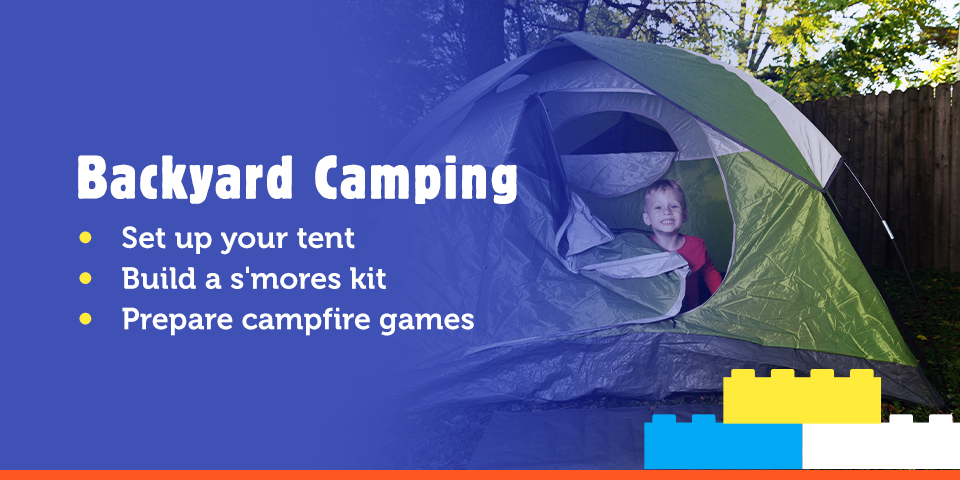
4. Backyard Camping
Whether you aren’t local to a camping hotspot or prefer staying home, follow these steps to create the ultimate backyard camping experience.
- Set up your tent: Quickly transform your backyard into a campground by setting up your tent. Make things comfortable by outfitting the inside of your tent with an air mattress, plenty of blankets, pillows and lighting.
- Build a s’mores kit: S’mores area classic campfire treat. Build a bonfire and create a s’mores kit equipped with graham crackers, marshmallows and chocolate.
- Prepare campfire games: Prepare for plenty of campfire festivities, like telling exciting or spooky stories and playing a fun game of telephone.
5. Stargaze
Another fun spring and summertime activity you can play with your kids around the campfire — or on any clear night — is stargazing. Stargazing is completely free and doesn’t require any materials unless you want a blanket or air mattress to relax on while you gaze. Before stargazing, explore the concept of space and stars with your child. Print out pictures of constellations, bring them outside with you, then see if you can spot any!
6. Birdwatching Book
Birdwatching is a fun, free activity that teaches children different ways to appreciate nature. Find a printable birdwatching book online and take your child outside for some birdwatching fun. You don’t have to go far — even sitting in your backyard or on your porch will work. Look at the birds that pass by and browse through your birdwatching book to see if you can identify any of them. If you can’t, challenge your child to draw the unfamiliar bird and research it later.
7. Go to the Playground
Playgrounds are always a reliable option when you’re looking for easy spring and summer activities to do with your kids. All playgrounds have specialized equipment that benefits child development in ways that include:
- Improved gross motor skills
- Improved coordination
- Access to sensory play
- Learning how to play and communicate with others
- Practicing decision-making abilities
Aside from enjoying the playground equipment, you can also incorporate some of the other educational spring- and summer-themed activities for kids mentioned on this list, like birdwatching or going on a nature scavenger hunt.
Indoor Spring and Summer Activities for Kids
Luckily, when Mother Nature doesn’t agree with your plans, you can do plenty of fun activities from the comfort of your home. Bring the outdoors inside with these eight at-home spring and summer learning activities for kids.
8. Growing Beans
Your kids don’t have to play around in the dirt to become gardeners. You can grow beans right from your home — all you need are two bean seeds, a small container and cotton balls. Growing is easy — it takes only two to three days to sprout! Grow your bean seeds by following these instructions:
- Fill a clear jar with cotton balls.
- Place two bean seeds on either side of the jar so your child can easily watch them grow.
- Water the cotton balls until they’re damp, but not overly saturated.
- Check your beans every two to four days and watch as they sprout, grow tendrils and a root system, stems and leaves.
- If you want, carefully remove the beans after a few weeks of growth and replant them into your outdoor garden. That way, you and your children can enjoy fresh beans.
Your kids will love checking on their plants every day. Plus, it’s an excellent opportunity to learn more about science, as they’ll get to see every stage of a plant’s growth you don’t usually get to observe when planting in soil.
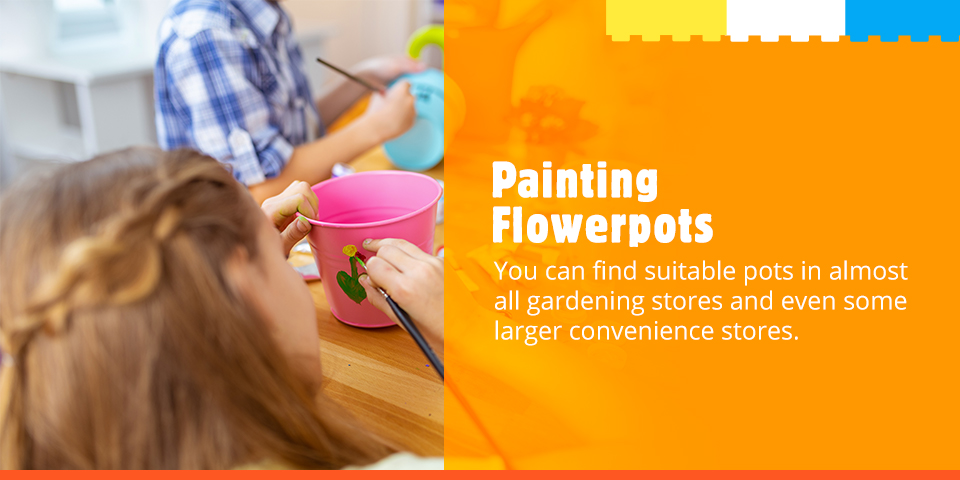
9. Painting Flowerpots
Arts and crafts are essential for many reasons. They help children practice their fine motor skills — aka small muscle movements, like holding a paintbrush — develop creative thinking, build self-esteem and spend quality time with you.
A beautiful warm-weather tradition you should consider starting is painting flowerpots. You can find suitable pots in almost all gardening stores and even some larger convenience stores. Aside from flowerpots, all you need is a paintbrush and acrylic paint — which you may already have around your home if you have a young artist.
After your child finishes designing and painting their flowerpot, take them to a garden center and allow them to pick out flowers to fill it. Or, put their gardening skills to the test and ask them to choose flower seeds to grow themselves.
10. Birdhouse Painting
Painting birdhouses is another excellent way to get your child’s creative brain thinking. Your birdhouses will attract birds to your property that will eat unwanted insects, control weed seeds and help pollinate flowers. You can use these benefits as learning opportunities to teach your child what happens outside during the spring.
Head to the store and find some prebuilt birdhouses for a quick activity, or put your woodworking skills to the test and build one yourself! Then, once you’re ready, set up a painting station and get painting.
11. DIY Flower Crowns
Crown your child a queen or king with these in-season DIY flower crowns. To make a flower crown, you’ll need:
- Cardstock
- A pencil
- Scissors
- Transparent contact paper
- Flowers
Once you’ve gathered all your supplies, it’s time to start crafting. Follow these instructions to design your flower crown.
- Draw the crown shape: Draw out the shape of your crown on your cardstock, including cut-outs. The adhesive — which you’ll apply next — will fill the cut-outs, and you’ll put your flowers into those spots.
- Add contact paper: Pull the backing off the contact paper and place it on your table sticky side up. Then, press the crown onto the adhesive and use your scissors to cut off the excess around the border of your crown.
- Decorate your crown: Pull some petals off flowers of your choice, and place them on the exposed adhesive. You can also incorporate other decorative elements like jewels and beads for extra fun.
After you’ve finished crafting, use a piece of tape to secure your child’s crown onto their head.
12. Clay Leaf Prints
Clay leaf prints are snapshots of nature and something you can keep forever. To make them, you’ll need:
- White polymer clay
- A circular clay cutter
- Leaves
- An oven
- Acrylic paint
- Paintbrushes
Making clay leaf prints is easy. All you’ll need to do is:
- Roll out your polymer clay into a thin sheet around 1/4″ thick.
- Use your circular cutter to cut out circles from your sheet of polymer clay.
- Go outside and pick out around 10 of your favorite leaves.
- Take your first leaf and gently press it into one of your polymer clay circles, just enough to leave an imprint.
- Repeat step four for all your leaves or clay circles.
- Place your imprinted polymer clay on a baking sheet and bake according to package instructions.
- Let your polymer clay cool down once baked.
- Set up a painting station and encourage your children to paint their leaf imprints.
13. Build a Cloud
Build a cloud and teach your children more about the weather cycle. Before getting started, talk about the concept of precipitation — the air is full of water, and the clouds above us consist of condensed, tiny and lightweight water droplets. When those water droplets get too heavy, they fall from the sky in the form of rain or snow, depending on the temperature.
Make it rain in your home by creating a small raincloud. To do this, you’ll need:
- A clear plastic cup
- Shaving cream
- Blue food coloring
Then, follow these instructions:
- Fill your cup with room-temperature water.
- Spray a layer of shaving cream on top of the water to form a cloud layer.
- Discuss the concept of precipitation.
- Drop a few drops of blue food coloring and watch it run through the cloud layer and create raindrops, turning the water blue.
14. Spring and Summer Sensory Bins
Sensory bins are containers filled with materials that stimulate a child’s senses, mainly touch. They’re free-play tools, meaning children explore the sensory bin through self-guided learning. Playing with a seasonal sensory bin is one of the best activities for kindergartners and preschoolers because they benefit from improved fine motor and language skills. Plus, sensory bins are a breeze to make and versatile for every season or holiday.
Some spring- and summer-inspired things you can place in your sensory bin include:
- Pastel-colored rice
- Plastic Easter eggs
- Acorns
- Fake flowers
- Plastic insects
- Miniature gardening tools
- Sand
- Minature umbrellas
- Seashells
- Plastic ocean animals
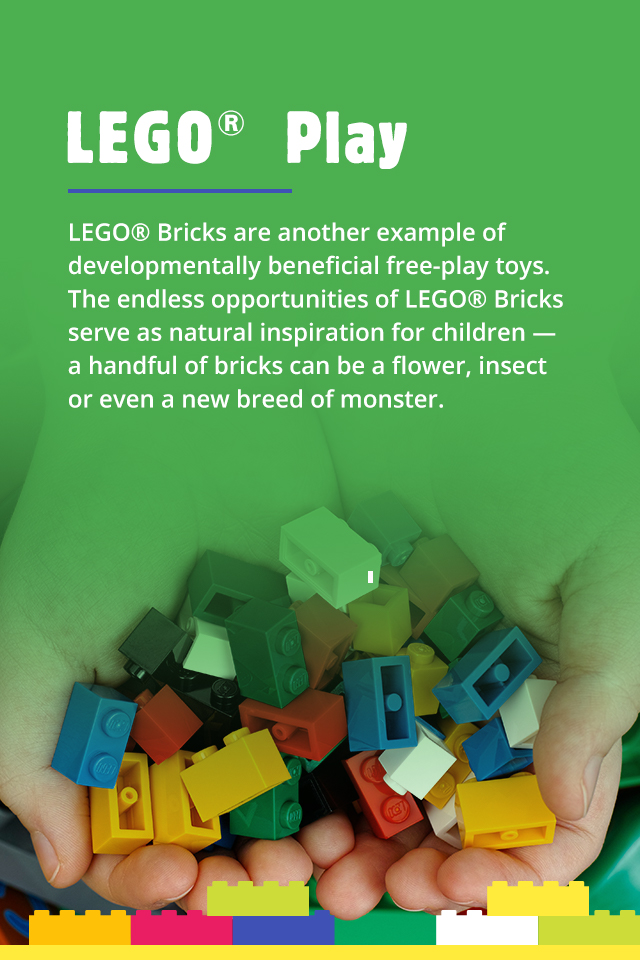
15. LEGO® Play
LEGO® Bricks are another example of developmentally beneficial free-play toys. The endless opportunities of LEGO® Bricks serve as natural inspiration for children — a handful of bricks can be a flower, insect or even a new breed of monster. All you need to do to spark your child’s imagination is place a bin full of LEGO® Bricks in front of them and watch the magic unfold.
Some benefits of LEGO® Bricks include the following.
- Improved concentration: Focusing for long periods is difficult for even some adults to do. Build your child’s ability to concentrate now by engaging in LEGO® Bricks play.
- Strengthened fine motor skills: Children must tap into the small muscle movements to manipulate LEGO® Bricks, benefiting their fine muscle growth.
- Better problem-solving: Your child will feel determined to make their imagination a reality. Their challenge is learning which LEGO® Bricks they need to do so.
Discover Bricks 4 Kidz Programs and Find a Location Near You
Bricks 4 Kidz started 10 years ago while a mother was watching her son play with LEGO® Bricks. With her background in architecture, she realized playing with LEGO® Bricks is more than just fitting two plastic pieces together — strategy and foundational skill development are behind every interaction. That’s why she created Bricks 4 Kidz, a STEM-based learning environment for children using LEGO® Bricks.
We offer many LEGO®-based building classes, including:
- After-school enrichment
- Camps
- Homeschool
- Coding
- Online classes
- Preschool
- STEM enrichment
- Video game design
If you’re looking for creative activity ideas for your kids this spring or summer, consider signing them up for some LEGO® Bricks fun at Bricks 4 Kidz. Discover more about our programs by finding a location near you!
